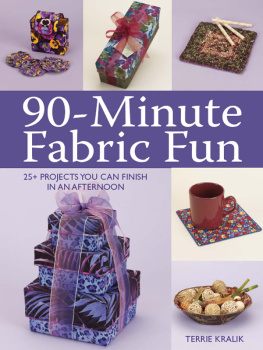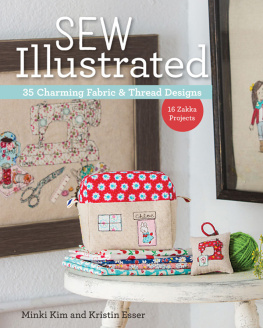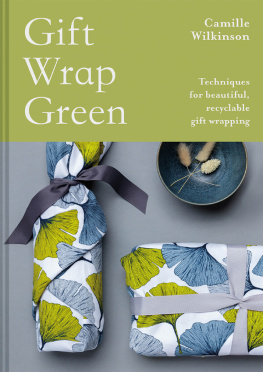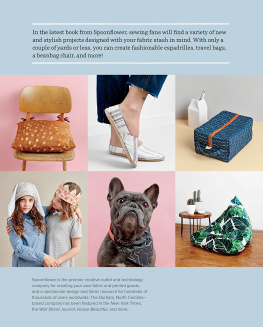



CONTENTS
READY, SET, GET INSPIRED!
DESIGN WITH FOUND OBJECTS
DESIGN WITH PHOTOS
DESIGN WITH DRAWINGS, PAINTINGS & PRINTS
DESIGN WITH WORDS, TEXT & LAYERS
ALL-DIGITAL DESIGNS
DESIGN CUT & SEW AND WHOLE CLOTH

A
INTRODUCTION
STEPHEN FRASER
By this time, if you are the least bit Internet-savvy and the kind of person interested in crafting and DIY culture, chances are youve heard of Spoonflower. My friend Gart Davis and I started Spoonflower in 2008 with very little money, but an ambitious idea. We wanted to develop the first website to make it possible for people to create and sell their own fabric designs through the Internet.
Since its modest beginning in a former sock mill in downtown Mebane, North Carolina, Spoonflower has been written about in the New York Times, the Wall Street Journal, Better Homes & Gardens, Martha Stewart Living, and BUST, as well as in well-known magazines published in Dutch, French, Italian, Spanish, German, and Japanese. The Spoonflower website has been liked and shared, pinned and followed by many thousands of bloggers, Instagrammers, Facebook fans, and Twitterers, and it is safe to say that the once-novel concept of being able to design your own fabric has permanently entered the collective consciousness.

My wife, Kim, and me. We have Kim to thank for inspiring Spoonflower.
From my standpoint this is enormously satisfying, as you might guess: the stuff of every entrepreneurs dreams. But, like the character in the Talking Heads song who wonders how he managed to land in the middle of the life he is living, I often find myself disoriented in the midst of Spoonflowers success. Is this, in fact, my beautiful website? It seems odd, given my background.
This book is primarily about how to design your own fabric digitally (meaning using a computer), but we also show you how to design for other surfaces, such as wallpaper and gift wrap. Each approach to developing a digital surface design is presented in the context of a handful of projects, which we hope you will want to make and/or use as a jumping-off point for further inspiration. No particular experience is necessary to begin. Weve included lessons and projects for novices and experts alike, from the simple (a pillow portrait of your pet) to the complex (an engineered print of a skirt pattern made from one of your own photos). Whether youre a quilter, a crafty parent, a professional artist, or an aspiring fashion designer, there are choices here for you.
We set out to create the most approachable book possible. But I should point out that Im not a designer. I also cant sew. Neither can my business partner Gart, with whom I cofounded Spoonflower. In fact, not only were we new to the world of fabric and sewing when we started, neither of us knew a thing about printing or, more broadly, textiles. Asked to play casting director for the ideal founder of Spoonflower, I might have sought out someone dapper, knowledgeable, and engaging: the fashion celebrity and design guru Tim Gunn comes to mind. But, alas, I am no Tim Gunn. People who have observed the state of my desk could reasonably question the wisdom of my involvement in any venture intended to promote a more beautiful or elegant anything. Lets not even bring up my fashion sense. And my partner Gart is, if anything, worse than I am in this respect. So how is it that either of us should have ended up in the business of introducing people to the world of surface design?

We showcase Spoonflower designers work on the tags we include with orders.
Spoonflower was my wifes idea. Unlike me, Kim is an avid sewist (her preferred term) and fabric collector. Shes a prolific quilter, enjoys making clothes for our three daughters, and in general displays utter fearlessness when it comes to making almost anything, from soap to homemade Pop-Tarts to hats. Spoonflower came about because, in the fall of 2007, Kim was thinking about making new curtains for our den. One night after work, while I sat on the sofa reading, she described to me her vision for the curtains, which would include fabric with giant yellow polka dots. The trouble, she explained from somewhere over my shoulder, was that she had not been able to find fabric with yellow polka dots as large as the ones she imagined.


Spoonflower is a busy and colorful place! Here are some snapshots of the facility that show our process, from printing to heat-setting to lovingly packaging orders for shipment.
Wouldnt it be cool, she said, if there was a place where you could order fabric you designed yourself? To hear her tell it, I barely looked up from my newspaper. Butand I write this on behalf of husbands everywheredespite all appearances, I was listening. The wheels were spinning. Partly because of digital technology, we live during a time when the option to customize your own products is, to an astonishing degree, not just common, but expected. Why on earth couldnt a person like Kim design her own fabric?
In January of 2008, not too long after my conversation with Kim about curtains, Gart and I sat down for coffee in Chapel Hill, North Carolina, to talk about the idea of starting a website that would let people create and sell their own fabric. Gart and I had worked together during the initial four years of Lulu.com, the worlds first Internet-based self-publishing tool for books, a company founded in 2002. Its where we learned the potential and the pitfalls of self-publishing and print-on-demand. Around the same time, YouTubewhich would become the king of all self-publishing siteswas also born.
Although neither of us had much money to invest, we agreed on a course of action that included talking to crafters about the idea and learning more about the technology that would be required to produce print-on-demand fabric. In 2008 there were a few services in the U.S. that offered to print custom fabric for you, but they were, by and large, quite expensiveup to $150 per yardand none of them had Internet-based business models.
Gart and I were in a great location to learn how to make fabric. As a state whose economy had once relied heavily on textile production, North Carolina was full of textile-related resources. A week after we had coffee to discuss the idea, I was able to go a few miles down the road to Raleigh to visit a lab at North Carolina State Universitys College of Textiles and see my first digital textile printer. At another institution close by, a not-for-profit called [TC]2, I was allowed to try one out. The machinery itself didnt seem complicated. The machines I saw were just big, expensive inkjet printers, larger versions of the sort of device you might use at home to print your photos and documents. In my next conversation with Gart, I effused over a handful of printed fabric samples and relayed the conclusion of my investigations: We should just buy a printer and try it out. It cant be that hard.
Next page

















